What is
a mezuzah trace?
“It’s likely our last hope for you to find us...”
What is a mezuzah?
Mezuzah is a scroll of parchment with excerpts from the Book of Deuteronomy.
The scroll is housed in a container with a letter shin as one of the names for God, Shaddai. In a house, mezuzahs are hanged on the right side of all doorframes at approximately 2/3 of the frame’s height. It is a very important symbol of a Jewish home, as it reminds to respect Torah laws.
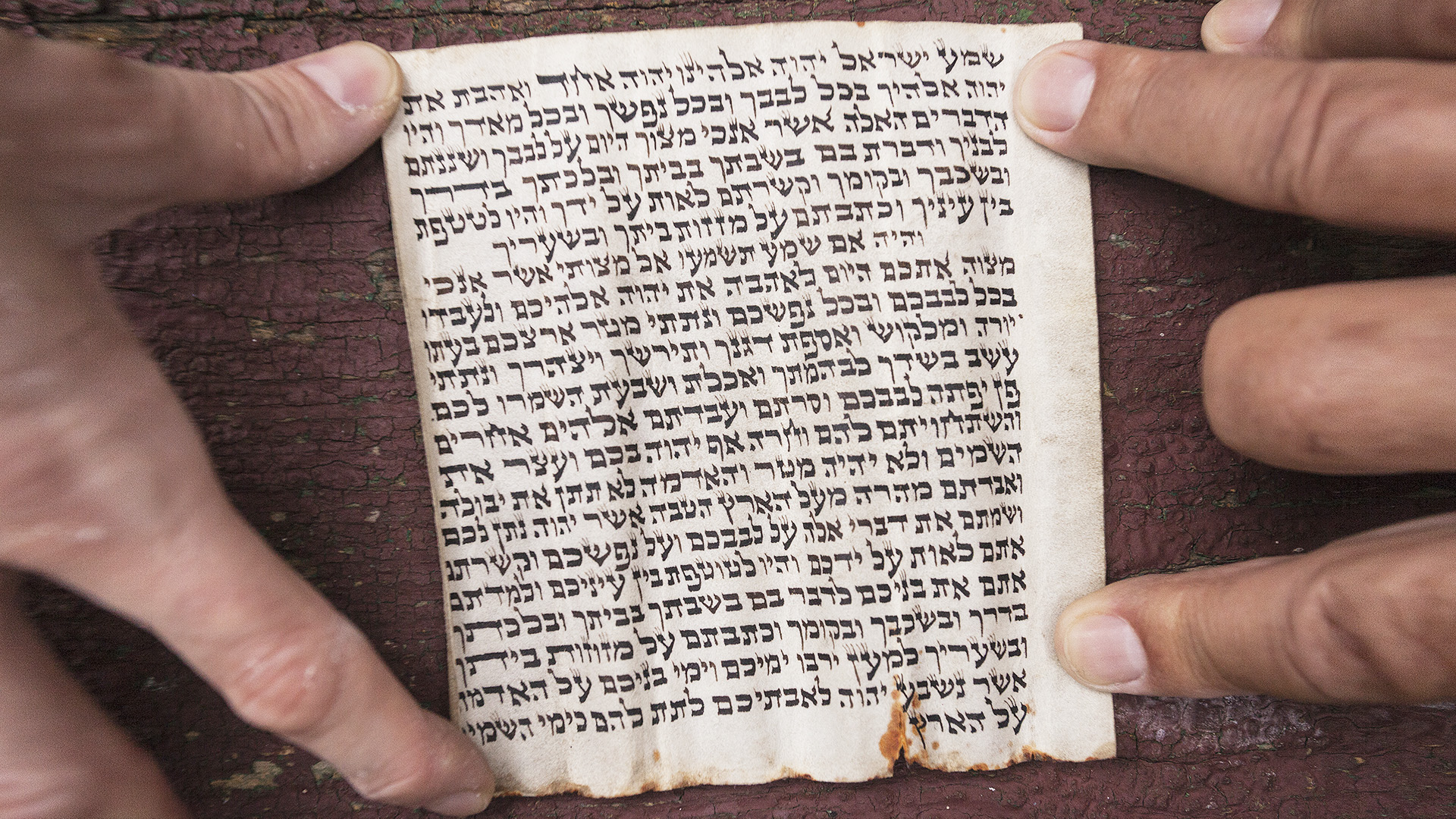
Mezuzah set contains:
Typical pre-war Polish mezuzahs consisted of the following elements:
1 – A metal plate covering the container containing the mezuzah scroll located in a recess on the doorframe. The plate is marked with the letter Shin.
2 – A recessed indentation in the doorframe in which the mezuzah is affixed.
3 – An additional container in which the mezuzah scroll was placed. This container was made of tin. The visible letter Shin.
4 – A rolled-up mezuzah scroll made of parchment. On the scroll is written the letter Shin.
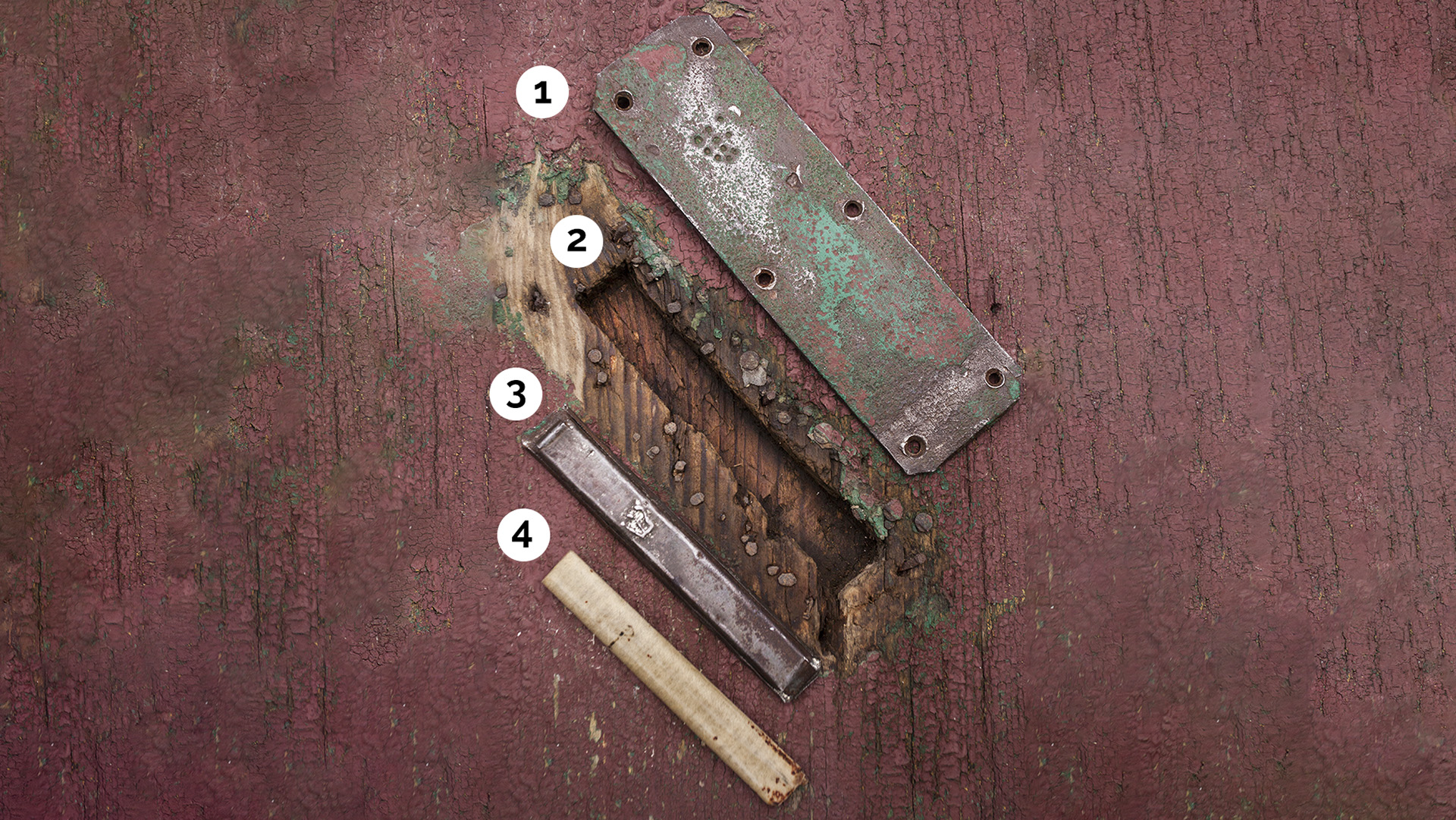
How pre-war mezuzahs look like?
From the outside, the plate enclosing the scroll in a recess in the doorframe was visible. On the plate is the letter Shin. The mezuzahs were of very primitive construction but this made the scrolls perfectly secure.

What is mezuzah trace?
The mezuzah traces are where the mezuzah scroll was located before the war. More than 3.5 million Jews lived in Poland before World War II. In the majority of Jewish homes, on the doorposts of every door used to be mezuzot. With the War, the mezuzot disappeared – leaving nothing but traces of emptiness and loneliness. Atypical traces on doorframes can be an indication of past presence of a mezuzah. It can be a groove, or a contour that sticks out from under the paint, or some nails that used to hold the mezuzah box. The mezuzah marks are symbols of emptiness.
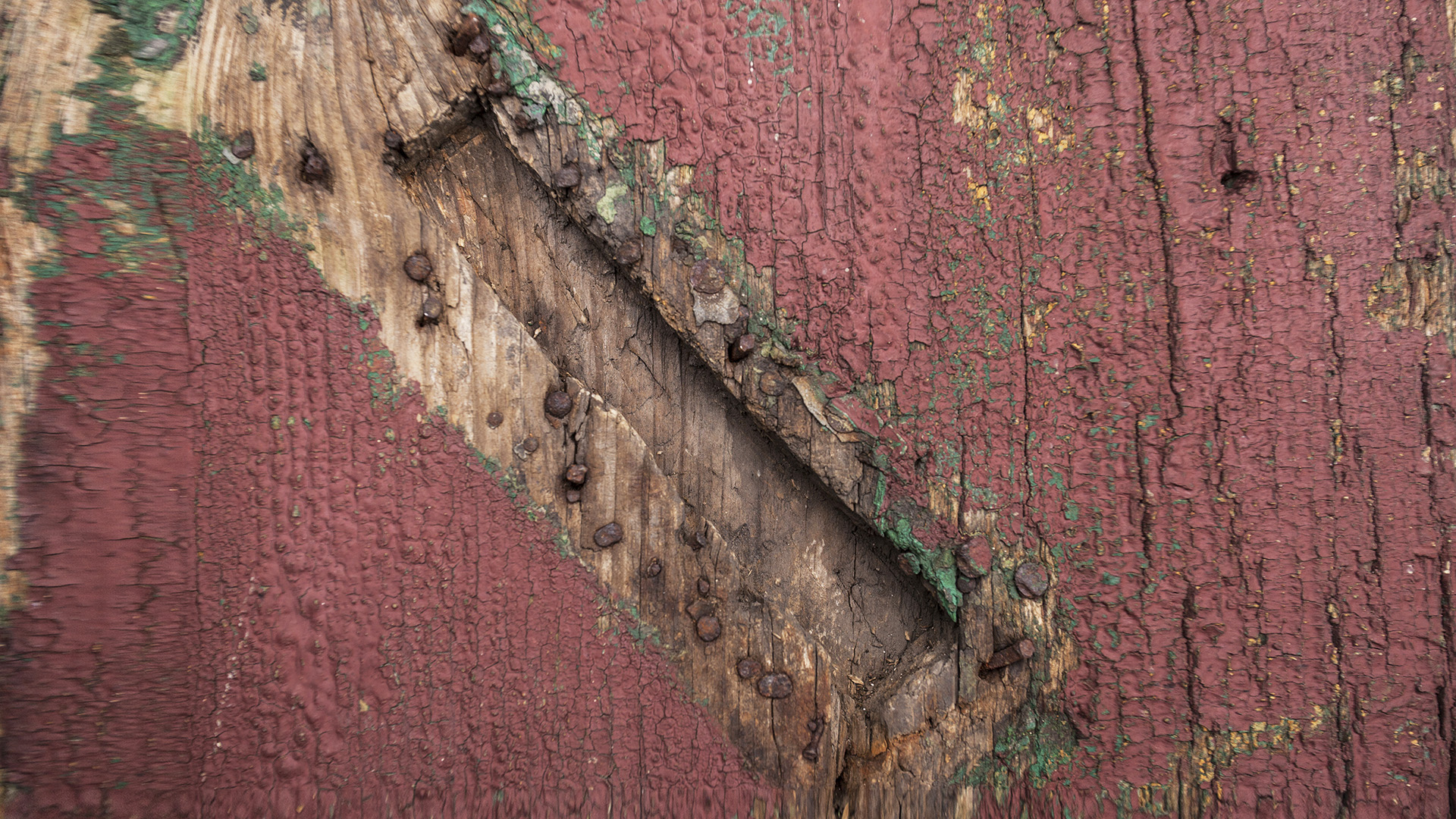
Symbolics behind a mezuzah
It is customary to write inscriptions on the back of the parchment: the Hebrew word שדי “Shaddai” [Almighty] – one of the Biblical names of God, also serves here as an acronym for Shomer Daltot Yisrael, „Guardian of Israel’s doors”. Many mezuzah cases are also marked with the Hebrew letterש Shin, for Shaddai.
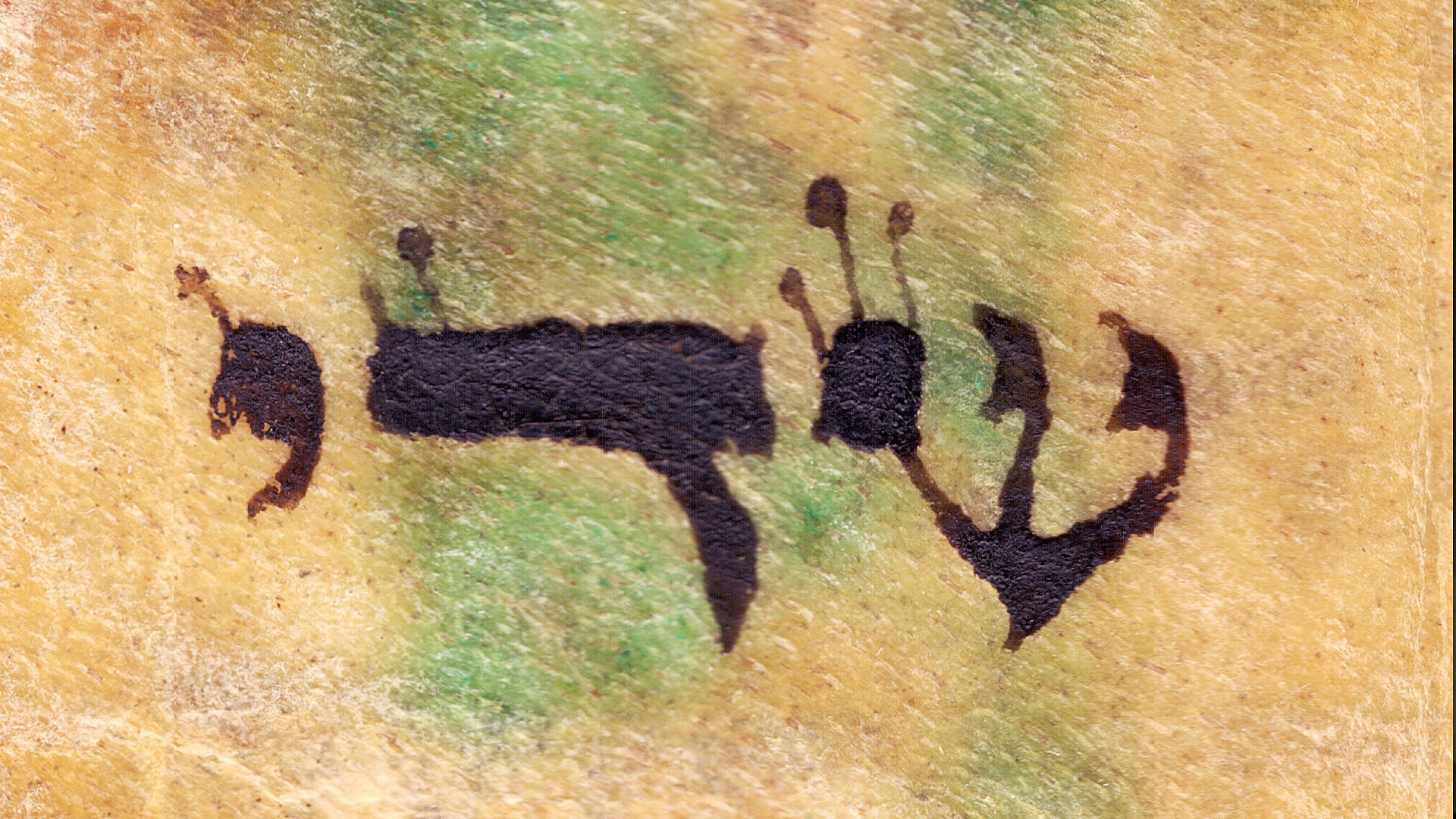
The purpose of mezuzah
In the Biblical verses where the mezuzah command is found, the purpose is educational, to constantly remind a person of God’s commandments. In later generations, though, the mezuzah began to be interpreted as an apotropaic device, protecting the house from forces of evil. A culture-comparative analysis suggests that the objects placed on domestic thresholds often bear the function of an amulet repelling the broadly understood evil. Some early Rabbinic sources explicitly witness the belief in the anti-demonic function of mezuzot. While some Jewish sources indicate that mezuzah is construed as a device protecting against divine anger, others vehemently reject such an interpretation. The belief in the protective power of mezuzah is prevalent in modern times as well. According to various pieces of sociological research, approximately three-quarters of adults in Israel believe the mezuzah guards their houses.
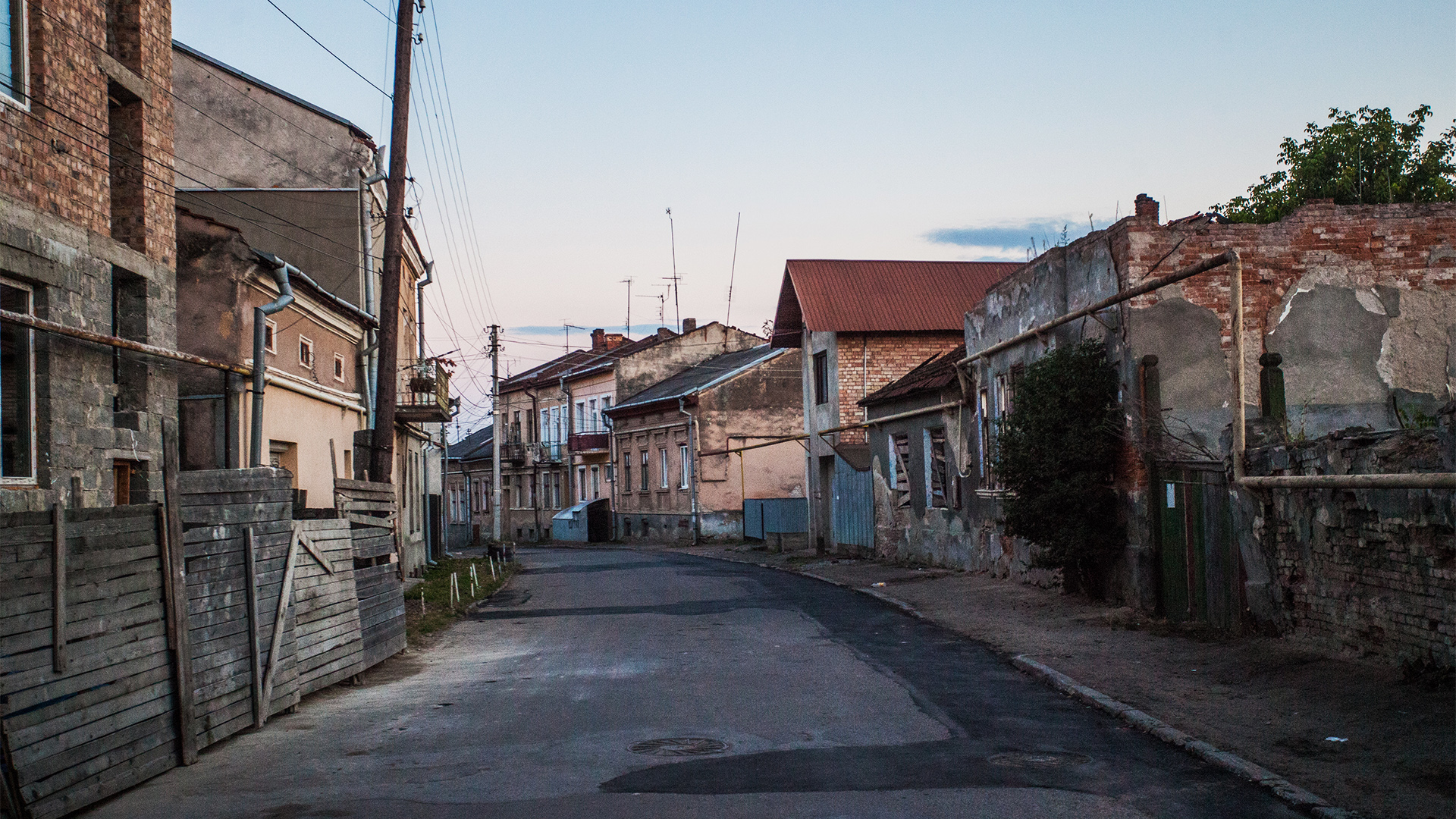
The text of mezuzah
Deuteronomy 6:4–9 and 11:13–21
HEAR, O ISRAEL: The LORD our God, the LORD is one. You shall love the LORD your God with all your heart and with all your soul and with all your might. And these words that I command you today shall be on your heart. You shall teach them diligently to your children, and shall talk of them when you sit in your house, and when you walk by the way, and when you lie down, and when you rise. You shall bind them as a sign on your hand, and they shall be as frontlets between your eyes. You shall write them on the doorposts of your house and on your gates.
And it shall come to pass, if ye shall hearken diligently unto My commandments which I command you this day, to love the LORD your God, and to serve Him with all your heart and with all your soul, that I will give the rain of your land in its season, the former rain and the latter rain, that thou mayest gather in thy corn, and thy wine, and thine oil. And I will give grass in thy fields for thy cattle, and thou shalt eat and be satisfied. Take heed to yourselves, lest your heart be deceived, and ye turn aside, and serve other gods, and worship them; and the anger of the LORD be kindled against you, and He shut up the heaven, so that there shall be no rain, and the ground shall not yield her fruit; and ye perish quickly from off the good land which the LORD giveth you. Therefore shall ye lay up these My words in your heart and in your soul; and ye shall bind them for a sign upon your hand, and they shall be for frontlets between your eyes. And ye shall teach them your children, talking of them, when thou sittest in thy house, and when thou walkest by the way, and when thou liest down, and when thou risest up. And thou shalt write them upon the door-posts of thy house, and upon thy gates; that your days may be multiplied, and the days of your children, upon the land which the LORD swore unto your fathers to give them, as the days of the heavens above the earth.
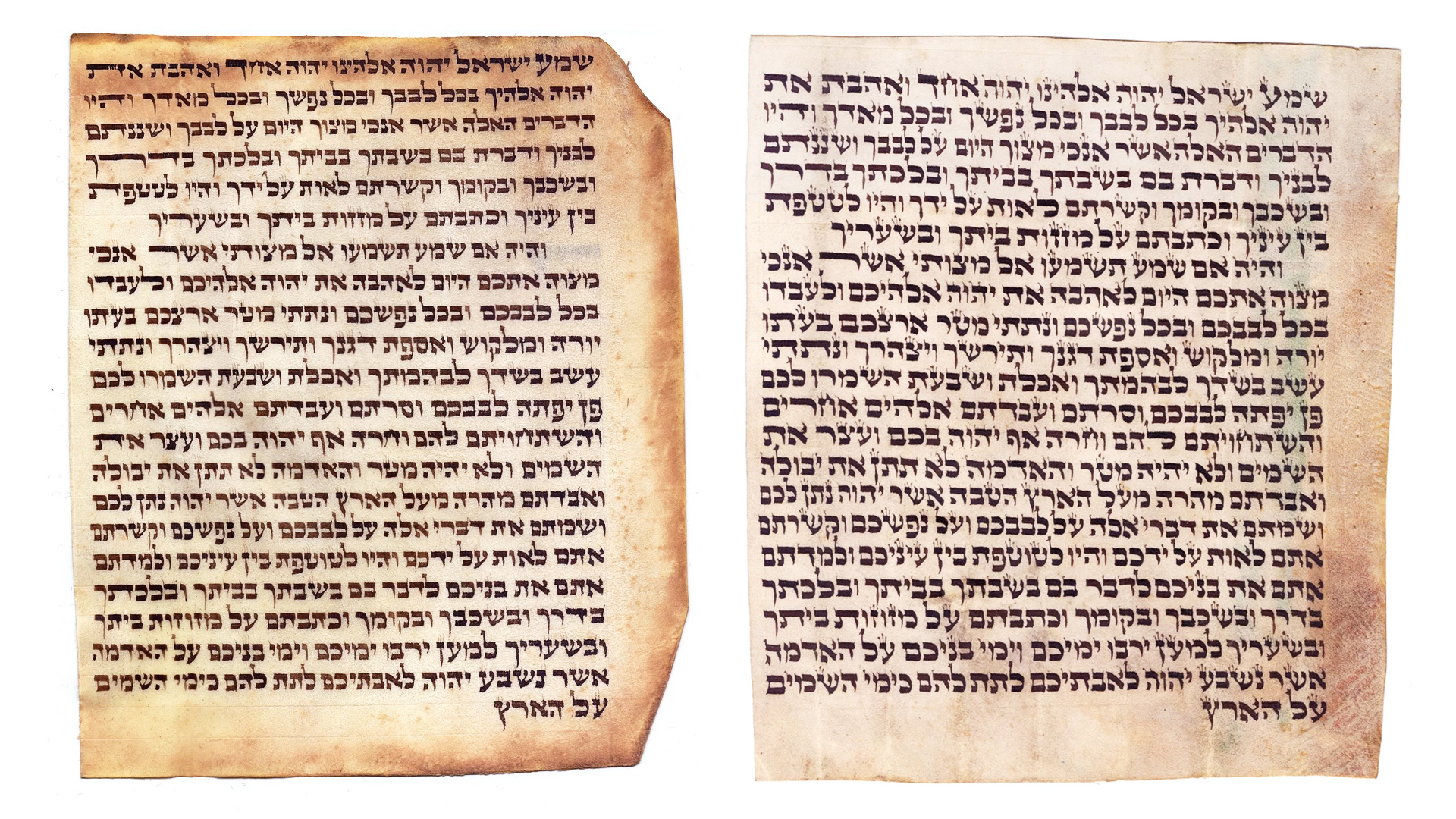
Why mezuzah traces are important?
Synagogues and Jewish cemeteries are symbols of existence of communities and are, unlike mezuzah traces, protected by law. Traces of mezuzahs are a sign of the existence of individual families. This kind of mark on doorpost makes it possible to reconstruct family stories. Additionally, traces of mezuzahs are symbolic keyholes through which one can see the old Polish-Jewish world.
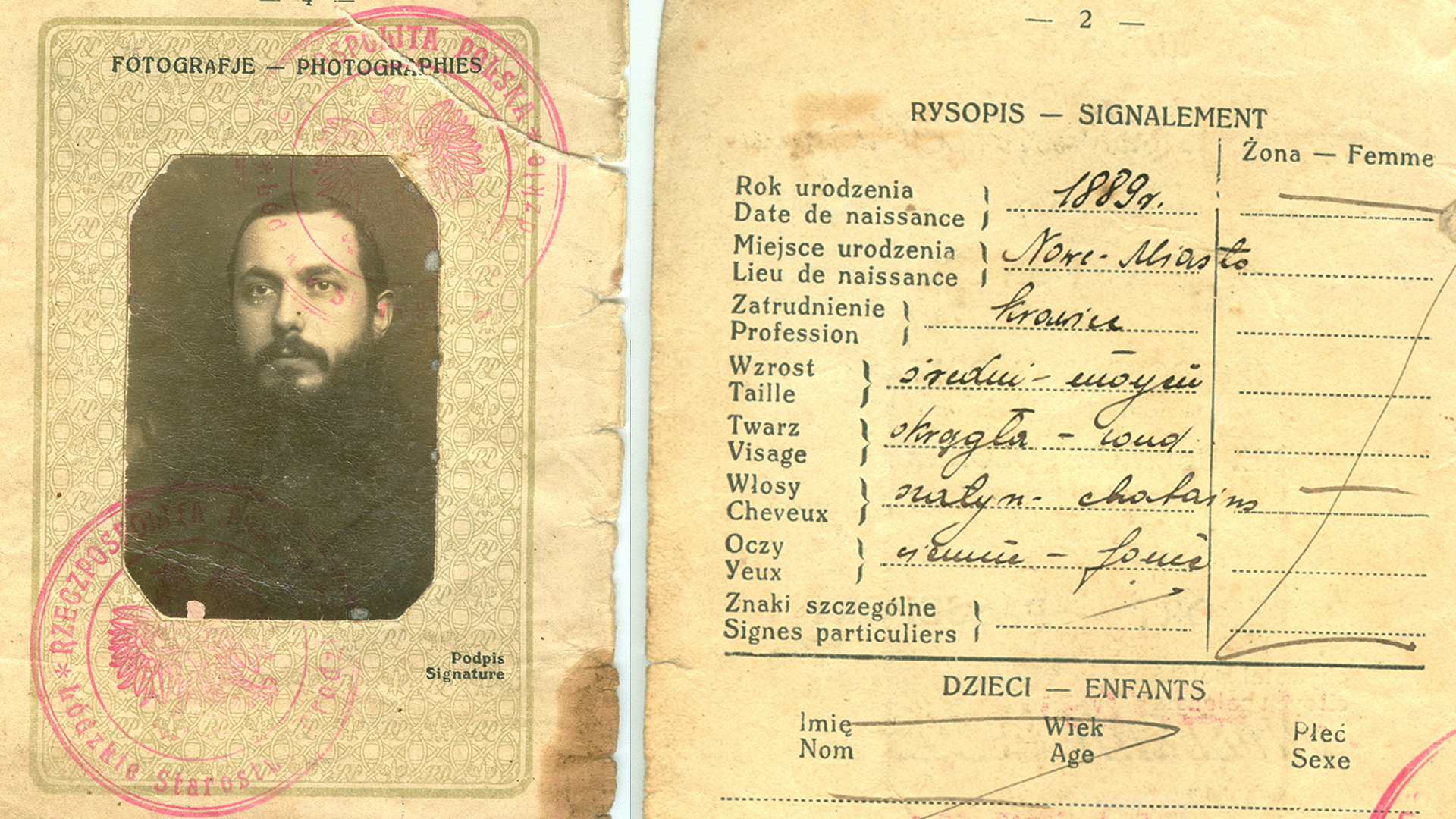
Where we found mezuzah traces?
Click for selected address to learn more.
- Baranowicze, ul. Mickiewicza 3
- Baranów Sandomierski, ul. Fabryczna 4
- Będzin, ul. Piłsudskiego 12
- Będzin, ul. Kołłątaja 14
- Bełz, Plac Sawenka
- Biała Podlaska, ul. Moniuszki 14/16
- Biała Podlaska, ul. Moniuszki 14/16
- Biała Podlaska, ul. Prosta 25
- Białowieża, ul. Stoczek 16
- Białystok, ul. Ciepła 8
- Bielsko-Biała, ul. 11 Listopada 63
- Brody, ul. Stusa 7A
- Brzesko, ul. Chopina 3
- Brześć, ul. Pograniczników Sowieckich 27
- Brzeziny, ul. Joselewicza 2
- Brzeziny, ul. Traugutta 12
- Buczacz, ul. Halicka 79
- Chełm, ul. Uściługska 3
- Chełm, ul. Uściługska 3
- Chełm, ul. Uściługska 3
- Chełm, ul. Uściługska 3
- Chęciny, ul. Staszica 1
- Chmielnik, Rynek 4
- Chmielnik, Rynek 6
- Chmielnik, ul. Sienkiewicza 12
- Chrzanów, ul. Krakowska 28
- Chrzanów, ul. Krakowska 28
- Ciechanowiec, ul. Kozarska 1
- Częstochowa, ul. Targowa 14
- Częstochowa, ul. Krakowska 7
- Dawidgródek, ul. Juchniewicza
- Dynów, ul. Mickiewicza 1
- Dynów, ul. Mickiewicza 21
- Działoszyce, ul. Piłsudskiego 9
- Gąbin, ul. Płocka 3
- Góra Kalwaria, ul. Piłsudskiego 13
- Grodzisk Mazowiecki, ul. 11 Listopada 6
- Iwano-Frankiwsk, ul. Hetmana Mazepy 56
- Jędrzejów Nowy 72
- Jarosław, ul. Kasztelańska 6
- Jarosław, ul. Sobieskiego 8
- Jasło, ul. Polskiego Czerwonego Krzyża 10
- Kalisz, ul. Chopina 12
- Kielce, ul. 1 Maja 68
- Kłodawa, Plac Wolności 6
- Kołomyja, ul. Orensztajna 10
- Kołomyja, ul. Piekarska 2
- Końskie, ul. Warszawska 5
- Kraków, Plac Wolnica 3
- Kraków, ul. Szeroka 38
- Kraków, ul. Brzozowa 13
- Kraków, ul. Brzozowa 13
- Kraków, ul. Dietla 66
- Kraków, ul. Dietla 83
- Kraków, ul. Krakowska 13
- Kraków, ul. Orzeszkowej 9
- Kraków, ul. Orzeszkowej 10
- Kraków, ul. Sebastiana 19
- Kraków, ul. Sebastiana 19
- Kraków, ul. Sebastiana 34
- Kraków, ul. Józefa 42
- Kraków, ul. Mostowa 8
- Krosno, ul. Słowackiego 19
- Krynki, ul. Piłsudskiego 1
- Leżajsk, Plac Targowy 6
- Lubaczów, ul. Wyszyńskiego 9
- Lublin, ul. Lubartowska 47
- Lutomiersk, ul. Kościuszki 40
- Lwów, ul. Braci Rohatyńców 21
- Lwów, ul. Braci Rohatyńców 45
- Lwów, ul. Braci Rohatyńców 47
- Lwów, ul. Rybna 3
- Lwów, ul. Fedorowa
- Lwów, ul. Chornomorska 9
- Lwów, ul. Gonty 1
- Lwów, ul. Kniazia Lwa
- Lwów, ul. Lajnberga 9
- Lwów, ul. Ruska 4
- Lwów, ul. Starojewriejska 4
- Lwów, ul. Starojewriejska 4a
- Lwów, ul. Starojewriejska 29
- Lwów, ul. Starojewriejska 48
- Lwów, ul. Użhorodska 16
- Łomża, ul. Polowa 59
- Łowicz, ul. Browarna 11
- Łódź, al. Armii Krajowej
- Łódź, ul. Rewolucji 1905 r. 5
- Łódź, ul. Rewolucji 1905 r.18
- Łódź, ul. Wschodnia 34
- Łódź, ul. Wschodnia 35
- Łuck, ul. Kowelska 12
- Marakesz, Maroko
- Międzyrzec Podlaski, ul. Jatkowa 10
- Mogielnica, ul. Grójecka 7
- Nasielsk, Rynek 22
- Nasielsk, ul. Starzyńskiego 10
- Opatów, ul. Szeroka 5
- Ostrołęka, ul. Gomulickiego 20
- Ostrowiec Świętokrzyski, ul. 3 Maja 4
- Oświęcim, ul. Ks. Jana Skarbka 2
- Oświęcim, ul. Solskiego 4
- Otwock, ul. Świderska 6
- Ozorków, ul. Wyszyńskiego 5
- Pabianice, ul. Bóźnicza 9
- Pińsk, ul. Komsomolska 23
- Pińsk, ul. Komsomolska 23
- Piotrków Trybunalski, ul. Wojska Polskiego
- Płock, ul. Kwiatka 9
- Przemyśl, ul. Władycze 17
- Przeworsk, ul. Krótka 3
- Radom, ul. Wałowa 5
- Radom, ul. Żytnia 1
- Radziłów, Plac 500-lecia 13
- Radzyń Podlaski, ul. Ostrowiecka 26
- Rudki, ul. Stepana Bandery 3
- Rudki, ul. Stepana Bandery 3
- Rudki, ul. Stepana Bandery 3
- Sambor, ul. Wuzka 4
- Siedlce, ul. Sokołowska 18
- Sieradz, Rynek 4
- Słonim, ul. Komunistyczna 2
- Sokołów Podlaski, ul. Wilczyńskiego 4
- Sosnowiec, ul. Targowa 15
- Stalowa Wola, Rynek 14
- Stryj, ul. Krawiecka 22
- Suwałki, Plac Marii Konopnickiej 14
- Syhot Marmaroski, ul. 20 Grudnia 1984 11
- SyhotMarmaroski, ul. 20 Grudnia 1984 14
- Szczebrzeszyn, ul. Zwierzyniecka 3
- Tarnobrzeg, Rynek 13
- Tarnów, ul. Brodzińskiego 32
- Tarnów, ul. Zakątna 11
- Tarnów, ul. Zakątna 11
- Tarnów, ul. Zakątna 11
- Tomaszów Mazowiecki, ul. Jerozolimska 3
- Tomaszów Mazowiecki, ul. Jerozolimska 3
- Ulanów, Rynek 11
- Użhorod, ul. Gagarina 347
- Warszawa, ul. Brzeska 18
- Warszawa, ul. Brzeska 18
- Warszawa, ul. Brzeska 18
- Warszawa, ul. Brzeska 18
- Warszawa, ul. Próżna 14
- Warszawa, ul. Twarda 28
- Warszawa, ul. Twarda 28
- Warszawa, ul. Twarda 28
- Warszawa, ul. Waliców 10
- Warszawa, ul. Waliców 10
- Warszawa, ul. Waliców 14
- Warszawa, ul. Wileńska 7
- Warszawa, ul. Wileńska 9
- Warszawa, ul. Ząbkowska
- Warta, ul. Targowa 10
- Wieliczka, ul. Sikorskiego 7
- Wojsławice, Rynek 58
- Wojsławice, Rynek 58
- Wojsławice, Rynek 58
- Wrocław, ul. Włodkowica 9
- Wrocław, ul. Włodkowica 9
- Wrocław, ul. Włodkowica 9
- Zamość, ul. Spadek 27
- Zamość, ul. Spadek 27
- Zduńska Wola, ul. Getta Żydowskiego 7
- Zgierz, ul. 1 Maja 29
- Żółkiew, ul. Zaporiwska 1
- Żarki, Stary Rynek 15/17
- Żarki, Stary Rynek
- Żelechów, Rynek 4
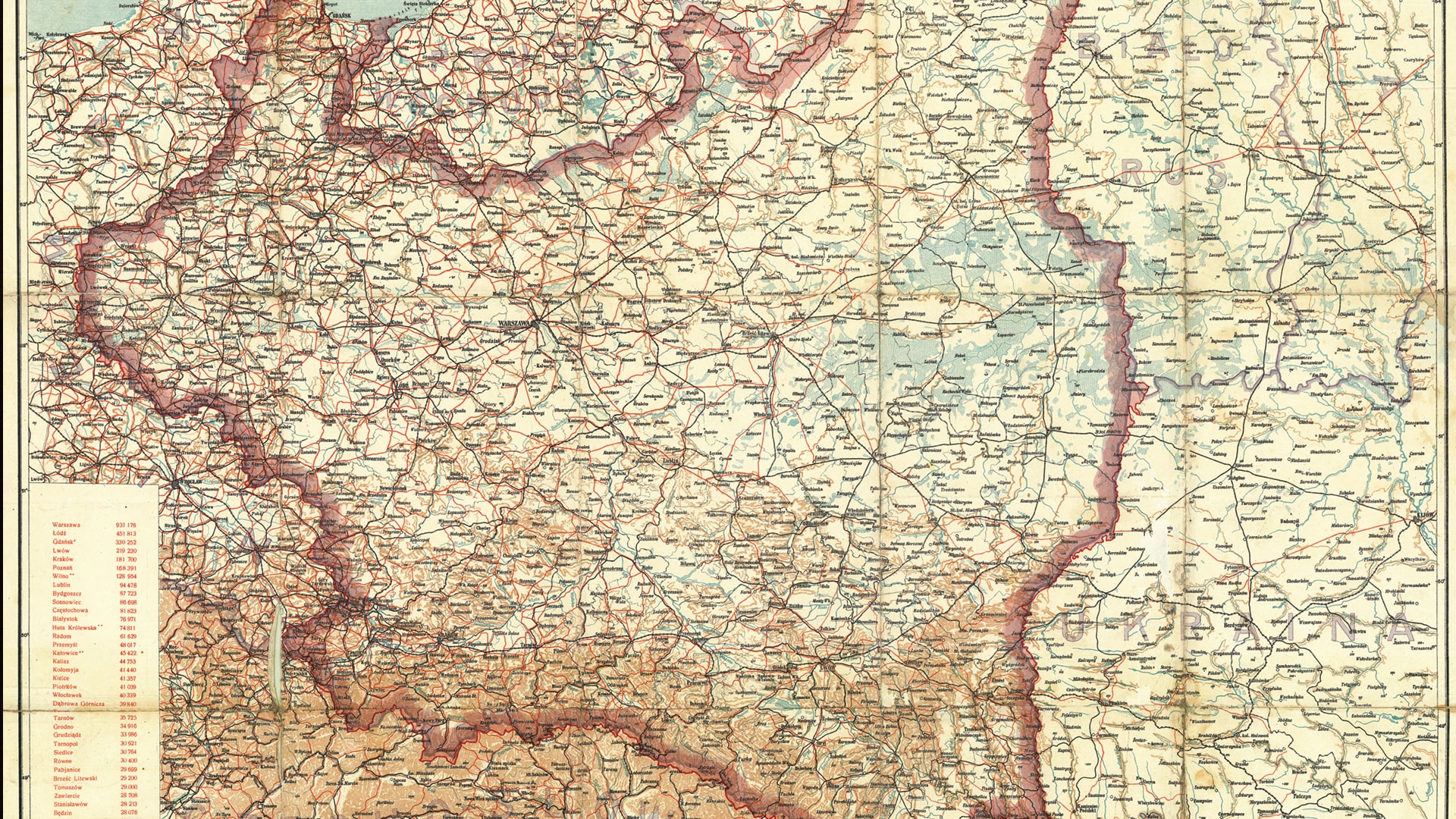
Acknowledgement
On this page we have shown photographs of the only surviving complete mezuzah in Poland, which consists of a doorframe with a mezuzah trace, a mezuzah container, a mezuzah scroll and a closing plate. The doorframe is the property of Mr. Wojciech Mszyca. Thank you for making the object available for documentation purposes.
What Is Mezuzah Trace? A Guide to Construction and Meaning
Curious what is mezuzah trace and why it matters? This unique mark is more than just a faded outline on a doorframe – it’s a silent witness to Jewish family life and heritage. When exploring sites of former Jewish homes, people often ask what is mezuzah trace and how these small clues help reconstruct history. Understanding what is mezuzah trace unlocks moving stories from the past and sheds light on lost traditions. These marks offer a rare glimpse into the rituals and resilience of generations that came before.
Mezuzah Trace Meaning: The Foundations of a Lost Tradition
A mezuzah trace is a physical mark or imprint left on a doorframe where a mezuzah once hung. These traces are important symbols, especially in pre-war Polish homes, revealing the exact locations where Jewish families observed an ancient tradition. Remnants of mounting nails, grooves, or faded paint often mark where a mezuzah case was affixed. Today, these traces serve as silent witnesses to history and are crucial in reconstructing stories of lost Jewish households.
Mezuzah traces differ from other Jewish heritage markers, such as synagogues or cemeteries, because they document individual family practices. The grooves, screw holes, or changes in paint texture are subtle but telling signs of mezuzah placement. Discovering a mezuzah trace on a doorpost helps shed light on family customs and provides a tangible link to a community’s past.
Mezuzah Trace Construction: Components and Elements
Typical mezuzah trace construction reveals several key components from historical mezuzah sets:
- The most visible part is a metal plate, often made of bronze or tin, marked with the Hebrew letter Shin.
- Beneath the plate lies a recessed indentation carved into the doorframe. This secure groove or hollow ensured the mezuzah remained protected yet accessible.
- An additional metal container for the mezuzah scroll often featured both functional and symbolic markings.
- Inside the container, a rolled parchment scroll bearing excerpts from Deuteronomy was stored. The scroll commonly featured the letter Shin or inscriptions like “Shaddai.”
When analyzing an old doorframe, the mezuzah trace may appear as a small outline, a layer of paint, or rusty nail heads. Each element offers insight into the craftsmanship and protective design used to safeguard the scroll.
Materials and Techniques Behind Mezuzah Trace
Historical mezuzah cases were crafted from brass, tin, copper, or even wood materials. The containers ranged from minimalist art deco shapes to more elaborate designs, but all prioritized durability and protection for the parchment. Metal plates protected the container and marked the doorpost, with grooves or nails holding every part tightly.
Modern researchers and artisans attempting to reconstruct or preserve mezuzah traces pay close attention to these materials. Techniques like casting, restoration, and documentation ensure the physical evidence remains visible for future generations.
Mezuzah Trace Symbolism: Why Every Detail Matters
The mezuzah trace is unique because it marks where faith met daily life. While synagogues and cemeteries preserved communal Jewish presence, mezuzah traces honor the private religious observance of families. Chipped wood or an outline beneath paint are not just architectural artifacts- they symbolize resilience, absence, and hope.
Searching for mezuzah traces is a way to preserve individual history, reconstruct genealogies, and pay tribute to those whose stories have been interrupted. These marks become part of a broader effort to document and remember Jewish households, their rituals, and the places where tradition flourished.
Recognizing Mezuzah Trace: How to Identify and Record
Not every mark on an old doorframe is a mezuzah trace. Look for patterns consistent with historical mounting: the right side of the doorframe, approximately two-thirds up from the floor. Signs include small grooves, nail holes, remnants of brackets, or unique contours in the woodwork. Experts and families often compare findings to documented examples and photographs to confirm mezuzah trace identification.
Recording and preserving mezuzah traces is vital for historic conservation. Museums and researchers document these features meticulously, piecing together the histories behind each mark. By recognizing and sharing mezuzah traces, new generations safeguard their stories – and reconnect with a lost cultural and religious landscape.